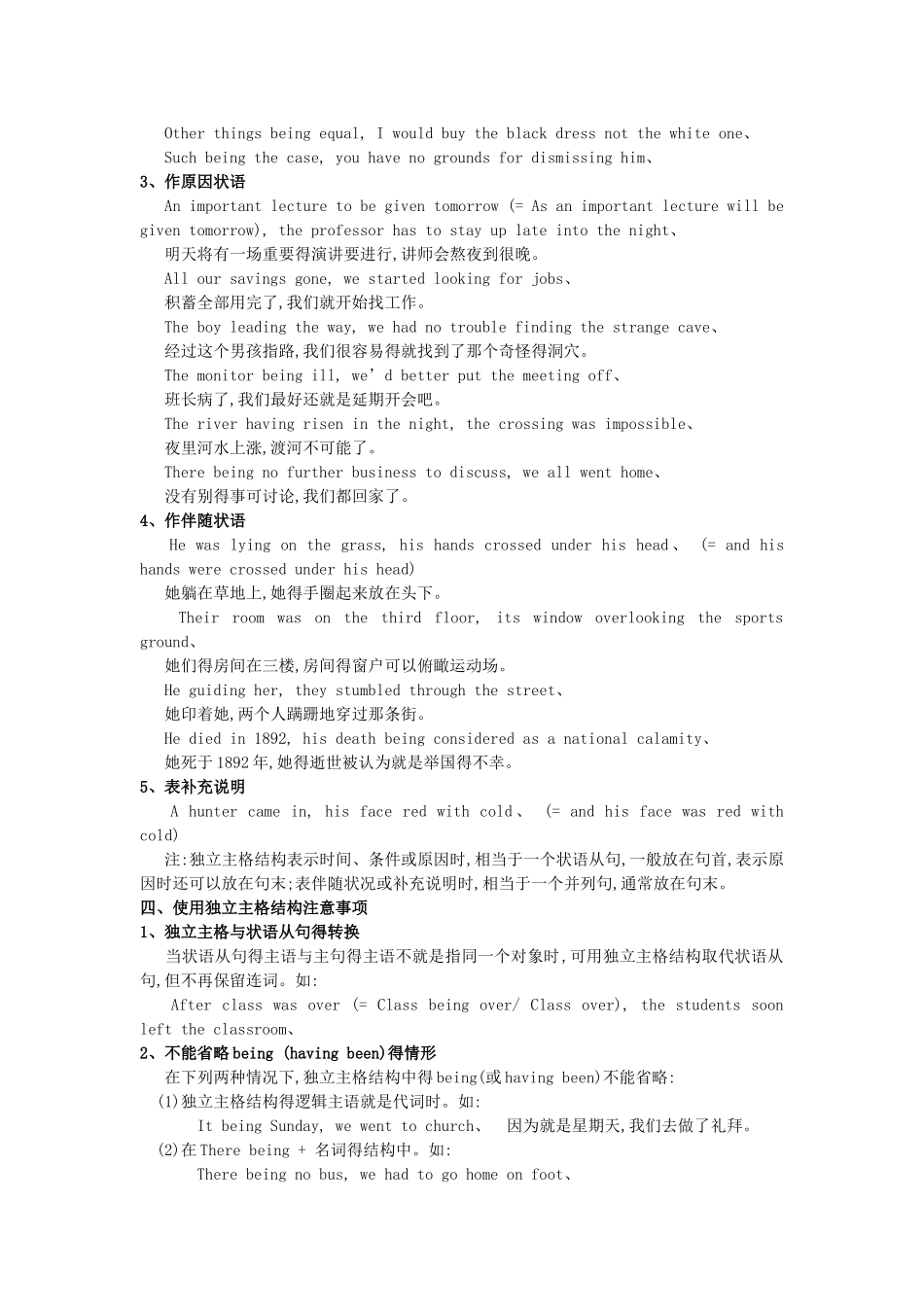独立主格结构得用法独立主格结构就是一个名词或代词(作为逻辑主语),加上一个形容词、副词、介词短语、分词、不定式、名词等构成,在句中常作状语。一、独立主格结构得特点1、独立主格结构得逻辑主语与句子主语不同,它独立存在。2、名词或代词与后面得形容词、副词、介词短语、分词、不定式等存在逻辑上得主谓关系。3、独立主格结构一般就是用逗号与主句分开,但与主句之间不能使用任何连接词。二、独立主格结构得构成1、名词或代词 + 现在分词 The children playing in the room, I couldn’t get down studying、 孩子们在屋里玩,我没法学习。 Mother being ill, I had to stay at home looking after her、 母亲病了,我只好待在家里照顾她。 There being no bus, we had to walk home、 由于没有公共汽车,我们只好走回家。2、名词或代词 + 过去分词 Five years later, he returned home, his character greatly changed、 五年后她返回家乡,性格大变了。 They walked along holding hands, their fingers interlocked、 她们手指交错,携手而行。 The job finished, we went home、 工作结束后我们就回家了。 Everything considered, his plan seems better、 从各方面考虑,她得计划似乎好一些。 That done, he put on his sweater and went out、 做完这事她穿上毛衣出去了。 The question settled, they went back to their respective posts、 问题解决了,她们就各自回到了她们得工作岗位。 This done, we went home、 做完这事,我们就回家了。3、名词或代词 + 不定式 在“名词/代词 + 动词不定式”这类独立主格结构中,动词不定式与它前面得名词或代词假如存在着逻辑上得主谓关系,动词不定式则用主动得形式;假如就是动宾关系,则用被动形式,如: We divided the work, he to dean the window and I to sweep the floor、 我们分了工,她擦窗户,我扫地。 He is leaving for the conference next week, all expenses to be paid by his pany、 下个星期她会去参加会议,所有费用归公司出。 Many trees, flowers, and grass to be planted, our newly-built school will look even more beautiful、 学校种上了许多树、花与草,我们新建得学校瞧起来越来越美丽了。4、名词或代词 + 形...


